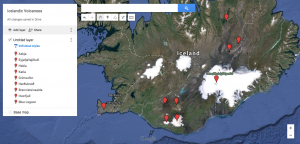Lately I have been testing out some Google Extensions that are supposed to help with accessibility for student who have special needs. I was surprised by how many are out there. I also think that they can help all students learn. Extensions are attached to your browser. You have to be in your Chrome browser, not Internet Explorer or FireFox. You also must sign in. To do that, look next to the minimize and “X” at the top right corner of Chrome, there is a man icon. Click on it and sign in with your @jcboe.k12.al.us account. Now no matter what computer you are on, the extensions will be there.
I am only going to list 5 at a time. That way it is not a huge list that can be overwhelming. Try these 5 and I will add 5 more to a new post later this week!
To get the free extensions visit the Chrome Store: https://chrome.google.com/webstore
If your school has Chromebooks these will really change your students with special needs’ lives.
Here is a list that I think will options that your students will benefit from:
This extension really has nothing to do with accessibility, but some of these apps need to be turned off and on quickly. Get this first.
Announcify will read a webpage for you. It also blur everything else on the page. The students will only see the paragraph or selection being read. This is not my favorite but does a decent job.
This one is from Google will read your entire screen, not just a webpage. It will put a box around what is wanted to be read. You can also tab it to the next area. If you have a chromebook it can be turned on in the OS and run the Chromebook with out even viewing the screen. I was surprised at how powerful this actually is, imagine a kid that can’t read being able to have it read a book from Google Books to him. Make sure you turn it off in Extensity when you don’t need it because it will drive you crazy.
Clearly is from Evernote. Clearly takes away distractions inside of websites. It will just show the content that is needed to be read. It hides all of the adds and menu bars. It will also let you highlight and it will save the highlights and page to your Evernote account.
This extension is also from Google. It will change the color hue on your screen for students that are color blind. They can move the filters so colors that may be similar to their eyes will have a large contrast. If blue words are written on a yellow background, most could see the difference but those that are color blind would not see the words as well. This extension will make a greater contrast.
I will add more later! Try these extensions on yourself then see if they can help your students! If you download them and then decide you want them off your computer, you can go to Chrome settings (see the 3 lines under the “X” in top right corner? Click it and choose settings) and click extensions on the left menu. There is a check box to disable and trash can to delete.

